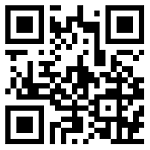提醒:点这里加小编微信(领取免费资料、获取最新资讯、解决考教师一切疑问!)
Teaching aims:
Knowledge aims:
Students can get familiar with the grammar point of noun clauses and recognize them.
Students can know the function of conjunction word “that” and “whether”/”if” and their differences.
Ability aim:
Through different ways of practice, students can use the noun clauses to make sentences and they can understand some passages which contain noun clauses.
Emotional aims:
Students can get more interest in English grammar learning and not afraid of learning grammar.
Teaching key points and difficult points:
Key Points:
Recognize noun clauses with different conjunctions and their meanings.
Difficult Points:
Use the conjunction “that” and “if/ whether” skillfully.
Teaching procedures:
Step 1 Lead-in (3 mins)
Greet students and show them a part of the video of a speech made by Martin Luther King “ I have a dream”, then make students do a imitation of it, paying attention to the pronunciation and the passion in it.
(Justification: arouse students’ interest in the class and lead in the class in a relaxing way.)
Step 2 Presentation(20 mins)
(1) show the original text of the classic part of the video again and lead them to discover the rule in these sentences:
I have a dream that one day on the red hills of Georgia the sons of former slaves and the sons of former slave-owners will be able to sit down together at the table of brotherhood.
I have a dream that one day even the state of Mississippi, a state sweltering with the heat of injustice, sweltering with the heat of oppression, will be transformed into an oasis of freedom and justice.
I have a dream that my four children will one day live in a nation where they will not be judged by the color if their skin but by the content of their character.
(2) Students may find they are all compound sentences and they all contain a conjunction “that”. Then let students make a assumption about what type of sentence they are. They can discuss with their deskmates.
(3) After discussion, teacher conclude the rule: they are called noun clauses, and we use “that” to introduce a noun clause when the clause is a statement and the clause is not functioned as anything. Or we use “that” to introduce a noun clause and the clause is functioned as subject or object or predicative in the whole sentence. For examples:
The radio announced that the mist would become a thick fog.(object)
That we couldn’t find our way out was really bad news.(subject)
The truth is that the buses will not be running.(predicative)
(4) We can also use “if/ whether” to introduce a noun clause when the clause is a “yes/ no question”. We change the word order in clause after “if /whether” into that of a statement. But we can only use “whether” but not “if” after a preposition or when the clause as the subject is at the beginning if the sentence. For examples:
She wondered if/ whether the buses would still be running.
She is not certain about whether she has done anything wrong.
Whether it is going to clear up keeps me wondering.
(Justification: these sentence can help students learn noun clauses in a interesting way .)
Step 3 Practice(10 mins)
(1) show a article on the screen about our senses and circle the right words:
Many people wonder if/ whether there is any connection between our senses and our health. Scientists observe that/ if making the most of our senses when we are young can keep us healthy later on in life.
Why do we feel anxious or tired? One study shows if/ that approximately 90% of our time is spent watching TV or using computers. It is added whether/ that while our sense of sight is used too much, our senses of touch and smell have been ignored.
People often ask whether/ if or not we should develop all our senses. The answer is yes. Experts suggest that/ if we do the following things more often. While having dinner, listen to some enjoyable music rather than watch TV. While relaxing at home, have some flowers next to you that smell nice. Before going to bed, turn the lights off. While sleeping, wear a nightshirt that is pleasant to touch—it will make us sleep well.
(2) Read the following sentences and complete them using “that/ whether/if”.
I felt my hands and feet were cold.
I thought I needed a hot cup of coffee to warm me up and recover some strength.
I knew I was getting close to the camp, as I could smell food.
I shouted to find out there was anyone there, but there was no answer.
I almost believed I could never find my way.
Suddenly I heard the sound of footsteps from behind and I wondered it was the sound of the wind.
(Justification: Through the two activities, students can deepen their understanding of the noun clauses introduced by “if/ whether/ that”)
Step 3 Production(10 mins)
Telling stories: students are supposed to make a story that happened in their life and then share it with the class, using the noun clauses introduced by “if/ whether/ that”. 2 minutes to prepare and 8 minutes to share.
(Justification: students can use the noun clauses skillly.)
Step 4 summary and homework(2 mins)
Summary: Invite one student to summarize what we have learned today.
Homework: Ask students to search for songs or sayings with a noun clause and share them next class.
(Justification: consolidate what we have learnt today after class.)
教师编制考试内容广泛,考生往往无从下手,抓不住重点。推荐报名教师编制考试笔试网校高清课程(点击购买,随报随学,不限时间次数。免费试听)进行系统学习。关于教师编制考试相关最新资讯或备考点击进入备考专题。
提醒:点这里加小编微信(领取免费资料、获取最新资讯、解决考教师一切疑问!)









